Fire Emblem Echoes: Shadows of Valentia recently launched in Japan and, over here on Serenes Forest, we’ve been playing and enjoying the game non-stop! To make the wait for the English release more bearable (or less bearable depending on your tolerance), here’s our review of the Japanese version.
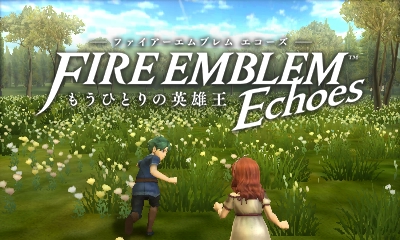
If you’re reading this, you’re probably a huge Fire Emblem fan and thus already have the game pre-ordered (or are going to buy it ASAP after release). So this review isn’t intended to persuade you or dissuade you from buying the game. Rather, we’ll be looking at the key features of the game and the parts of the game that shine (or don’t).
Caution: This article contains light to medium spoilers.
For the unacquainted, Fire Emblem Echoes is a complete remake of Fire Emblem Gaiden, which came out 25 years ago on the NES, but only in Japan. This means it will be the first time gamers in the West (as well as Chinese and Korean territories) can experience the world of Gaiden, officially anyway.
Back then, like many of Nintendo’s early sequels, Gaiden kept the core gameplay from the first game, but featured a heavy dose of experimentation. Some of these experiments, such as a traversible world map and branched Class Change system, eventually reappeared in newer games, but many other features have remained exclusive to Gaiden.
As a remake, Echoes sticks very closely to the formula introduced in Gaiden. Many of the gameplay nuances–even the really strange ones–have made the transition, therefore cementing Echoes as an authentic adaptation of the original. When you play Echoes, you’re more or less playing Gaiden.
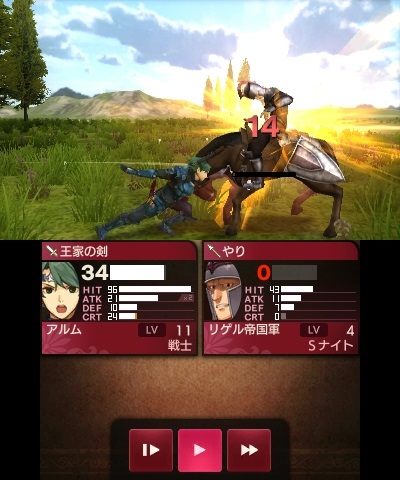
Of course, the graphics and gameplay have been given a complete overhaul, so it doesn’t feel like you’re playing a game from 1992. This includes amazing artwork from Hidari (of Atelier fame), fully voice acted dialogue and the silky-smooth UI and controls you’ve come to love. In addition, there are plenty of new features, which we’ll cover in depth very soon.
Story
The main story is unchanged from Gaiden, which isn’t a bad thing at all since the original story is still more than serviceable. The game takes place on the continent of Valentia, neighbour to Marth’s Archanea, which is currently in the midst of a war between the oppressive Rigelian Empire and the peaceful Kingdom of Zofia.
Stuck in the middle are two young adults, Alm and Celica, who lived together as children, but have since lived separate lives. As the continent is plunged into chaos, Alm and Celica must stand up and rally their own individual armies to restore peace and order–and ultimately face their intertwined destiny.
If this plot outline sounds overly familiar, don’t worry, it’s not you. After all, the original did come out two decades ago. However, what’s most important is how the story is told and the events that occur. In this sense, Echoes does an amazing job with the source material. From the get go, you can really see how much effort has gone into the presentation.
Scattered throughout are animated cutscenes by Studio Khara, which showcase important events in the game. Regular cutscenes are extremely polished as well, with gorgeous character artwork and full voice acting for 95% of the game (barring a handful of monologues and quest dialogue). These two combined make Echoes‘s story extremely captivating.
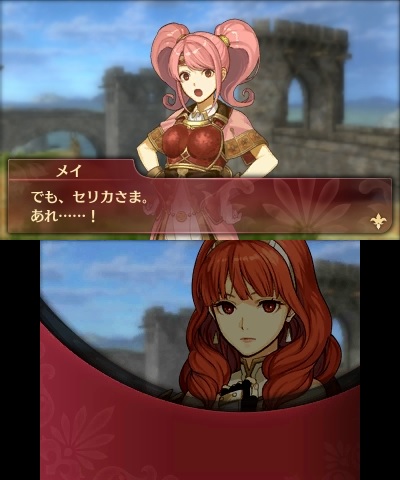
In fact, cutscenes play out very similar to high-profile visual novels. By default, the text automatically advances in time with the voiced dialogue, although you can press a button to switch back to the usual button prompts to advance text. Characters speaking always face forward, while the protagonist (Alm or Celica) appears and reacts on the bottom screen.
This makes for a very different feel to previous games, where the dialogue feels a lot more involved and personal. At times, it almost seems like you’re in the middle of a medieval fantasy drama. Although there is no Avatar to role-play, having the protagonist on the bottom screen is a bit like putting you in their shoes and helps you relate to their plight.
As for the events that occurs, without spoiling too much, it follows your typical classic fantasy. Alm and Celica both start from humble beginnings, but both hide a secret bloodline as evidenced by the Brands on their hands (although one of them doesn’t know it) and end up, through their own efforts, gathering a rag-tag group of heroes to fight against evil.
The biggest draw is the complex relationship between the two childhood friends. Anyone can tell they have the hots for each other, but due to circumstances, they are forced far apart and even after they reunite the first time, due to their conflicting commitments, things end up proceeding very awkwardly. With the addition of voice acting, many scenes can be tear-jerkers.
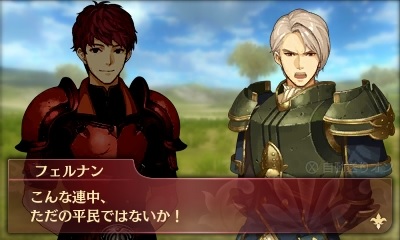
Furthermore, there is an underlying theme of nobility and common folk, and of responsibility and actions. After Zofia falls to the enemy, it is Zofia’s nobility that establishes the Deliverance to reclaim their nation. However, they soon realise the task is impossible through their efforts alone and start recruiting from the surrounding villages, which is how Alm enters the stage.
Despite opening their doors, an age-old rift between the nobility and common folk doesn’t simply disappear overnight and Alm and his friends in the Deliverance are continuously forced to battle this rift in addition to the enemy before their eyes. Likewise, Rigel prides its nobility and once it discovers a commoner is leading the resistance, things get very interesting.
Characters
Fire Emblem wouldn’t be where it is today if it wasn’t for its endearing cast of characters and Echoes is no slouch when it comes to likeable (and hateable) characters. The cast itself is a lot smaller than in most games, not just because half of the cast is divided into Alm’s party and Celica’s party. Which isn’t a problem since it means there are less “filler” characters.
Every character in your ranks has a well-defined personality, such as the fiery yet compassionate Alm, the kind and courteous Lukas or the slightly snobby but well-meaning Clair. These characters–and their traits–are a lot more defined due to the extensive voice acting, but also the various support conversations and base conversations.
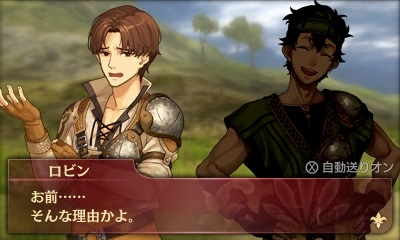
Not only that, but compared to other games in the series, a lot more “minor” characters pop up during the main story, rather than staying permanently in the background after being recruited. On Alm’s side, you can expect frequent interjections from the likes of Tobin, Kliff, Lukas, Clive, Clair, etc. This makes the journey feel a lot more lively than usual.
Those who really enjoy their characters probably lit up their eyes when “support conversations” was mentioned. Just like in recent games, certain pairs of characters can build up support relationships by fighting near one another. Once their relationship is strong enough, you can trigger up to three unique conversations on the battlefield.
Like the story, all support conversations are voiced, making the witty banter that more enjoyable. Unfortunately, there’s a very, very small pool of support conversations; most characters only have one partner to talk to. Also, since the conversations occur in battle, they are very short and rarely go into depth, since y’know, an actual battle is going on (and the characters reference this).
If you’re looking to delve into backstories, base conversations are where it’s at. While relaxing in the game’s villages or dungeon resting spots, you can chat to up to two random allies. Each character has 3 unique conversations, which are again voiced. Since there’s plenty of time, the characters get to talk about a lot more. The only downside is that they’re all (mainly) one-sided conversations.
Although support conversations are logged in Mila’s Turnwheel, sadly there’s no way to rewatch base conversations, which seems a little backwards. Not only that, but the timing of different base conversations can be vague and you can’t choose which allies to talk to, so you have to keep going in and out until the right allies appear.
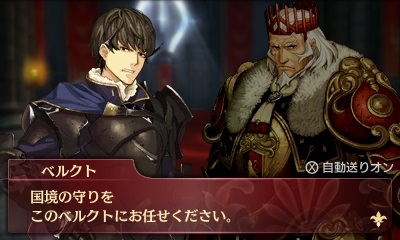
As well as including the entire crew from Gaiden, Echoes also has a few new characters, which we’d like to talk about. First up is Faye, a brand new female Villager added to Alm’s party. She fills the role of the female childhood friend who has a totally-not-secret crush on Alm. Despite her cute looks, she’s no cinnamon roll and is already the subject of debate among some fans.
Next up, we have Fernand, a member of the Deliverance who sides with Rigel after Alm is elected as the Deliverance’s leader. He’s a minor recurring villain (or rival) who acts as the face of the Zofian nobility, utterly unable to accept a peasant as his superior. Again, he’s very one-note, but he does have the benefit of a tragic past to explain his actions at least.
Berkut (pictured above) is another recurring villain/rival, this time directly from the Rigelian side. He’s the nephew of the current reigning Emperor and the next in line to the throne. Due to his pride and responsibility, he leads the Zofian invasion and thus clashes blades with Alm and the Deliverance. Likewise, he’s the face of the Rigelian nobility and a fairly well developed character.
Accompanying Berkut is Rinea, a noblewoman from Rigel who’s his fiancee. Sadly, despite initial promise, she mainly exists as eye candy and, perhaps more importantly, to show off Berkut’s bad and good sides. As a character, she doesn’t appear very often in the story and doesn’t have much of a defined personality except being nice.
Lastly, we have the Masked Knight. Yes, Fire Emblem loves its masked characters, starting with Sirius in Mystery of the Emblem, then the Black Knight in the Tellius saga and more recently Marth in Awakening. Oh and the Masked Mage in Heroes. In any case, talking too much about him would get us into spoiler territory. We can say he has an important role in Celica’s story.
Gaiden’s Gameplay
Time to discuss the other reason to play Fire Emblem: for the gameplay! Firstly, we’ll briefly cover the elements from Gaiden that Echoes has faithfully adapted, for the benefit of those who haven’t played Gaiden or don’t know much about it. The biggest thing to know is that Echoes leans slightly more towards the traditional RPG side, rather than the strategy RPG side.
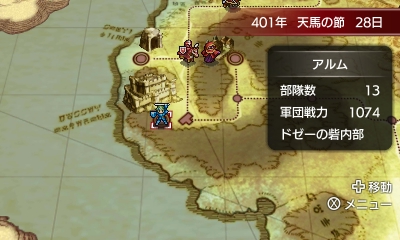
Back then, this was a big deal, but after the release of Awakening and Fates, it’s not much of a surprise anymore. Like those games, expect a world map that you can move around and optional skirmishes to train your party. Furthermore, in keeping with the RPG theme, you can visit villages to inquire about information and explore dungeons infested with enemies.
The latter two elements have actually been completely retooled for Echoes. Before, you could physically walk around villages; now you simply navigate using a menu, akin to a visual novel. Given how the dialogue scenes are literally straight out of a visual novel, this change makes a lot of sense and keeps the gameplay flowing nicely.
Still, the implementation is slightly disappointing. Not just because you could freely roam around your castle in Fates, but the revamped dungeon exploration shows Intelligent Systems could have made explorable villages if they wanted to. To further put salt in the wounds, the villages are rendered in 3D, although that’s mainly for the stereoscopic 3D effect.
Anyway, in village exploration mode, you have the option to talk, examine or move between areas. If there are townspeople, you can talk to them to get hints or start sub-quests (we’ll cover these later) or if there are allies around, start a base conversation with them. Examining lets you move a cursor to check out interesting spots and obtain any items lying around.
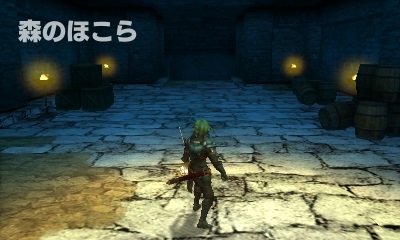
On the other hand, dungeon exploration is a real highlight of the game. As soon as you enter a dungeon, the view changes to a third person perspective, with the camera following Alm or Celica. You can then explore dungeons like in an action game, as you search for the exit and any treasures along the way. Enemies appear in plain sight and bumping into them triggers a short battle.
At the end of each dungeon, you can find a Mila’s Shrine, which you can use to upgrade your characters to a higher class if they’re ready. There are also Sacred Springs that provide permanent stat boosts, but only a limited amount of times. The dungeons were some of our favourite parts of the game and they really nailed the presentation and the atmosphere.
The battles themselves are classic Fire Emblem, literally. The Pair Up feature introduced in Awakening is no more; however the standard support system remains, where compatible characters gain a minor stat boost when fighting close to one another. Like Fates, weapons have unlimited uses, so it’s more of what weapon to use, not when.
Unlike typical Fire Emblems, characters can only equip one item at a time–and this applies to weapons, shields, equipments and provisions (food items). So if you’re holding a sword, you can’t hold onto anything else. If no weapon is equipped, a character fights with a default 0 Might weapon. Therefore you need to consider whether to focus on the offensive or defensive.
True to Gaiden, there is no weapon triangle–and in fact, there are no playable characters that can wield axes, only swords, lances, bows and magic. Of course, bows still best flying units and magic can tear through heavily armoured foes. On top of that, terrain effects have a much larger impact here; for example, a Forest tile provides a hefty 40 boost to Avoid.
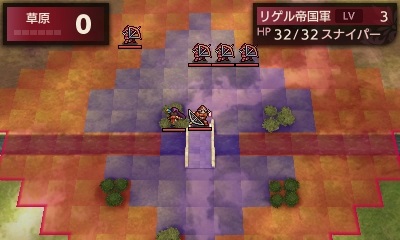
Most of the classes are series staples such as sword-wielding Mercenaries, heavily fortified Knights and horse-riding Cavaliers. A few of them have novel twists though, like Archers who boast an attack range of up to 5 squares (or more depending on their weapons or skills) and can even attack adjacent squares. Making them extremely formidable allies and foes.
Spell-casters such as Mages and Clerics must expend their own HP to cast spells. To make up for this downside, offensive spells are often very powerful and have the side effect of ignoring terrain effects. By the way, although this seems strange, it’s completely consistent with the in-universe lore (tomes and staves reduce the stress of the caster, but proper ones don’t exist in Valentia).
By this stage, you may be wondering about the map design. Sadly, most of the maps are directly copied from Gaiden, so you will encounter a lot of large, open plains. Fortunately, the gameplay is a lot quicker in Echoes and you can still skip enemy phases. That’s not to say battles can’t be interesting though, as you have to factor in enemy movement ranges and numbers a lot more.
Difficulty-wise, on Normal, the game is mostly a cakewalk. At the time of writing, we haven’t tried Hard, although we’ve heard it’s still easy for series veterans, while Lunatic is sadly MIA. There are some pretty challenging sub-quests though and later maps can get tricky if you don’t pay attention due to the powerful bosses or big groups of enemies.
New Gameplay
You can’t have a modern remake without some new gameplay features and Echoes has plenty of these sprinkled everywhere so even those who played Gaiden are in for a pleasant surprise. Most of these features are optional too, if you want the authentic Gaiden experience.
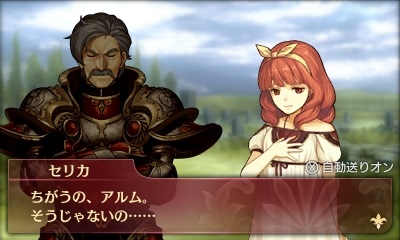
As soon as the game begins, there’s a brand new Prologue that takes place before the main story starts, similar to in Shadow Dragon and New Mystery of the Emblem. Essentially it consists of a very brief dungeon and battle map, but the new story is very touching and conveniently fills in a gap in the original, explaining why Celica had to leave Ram Village.
The next thing you’ll notice is the addition of provisions, food items that can be consumed to restore HP and fatigue. Characters who aren’t the protagonists can only consume provisions during battle if they’re holding onto one or move next to a protagonist. Meanwhile the protagonists are free to take a snack whenever they want. This makes it easier to keep your characters fighting fit.
Speaking of fatigue, it works like a much less harsh version of fatigue in Thracia 776. As your characters perform actions, their fatigue gradually increases, as indicated by a smiley face icon next to their HP bar. When the fatigue is at maximum, shown by an unhappy face, the character’s maximum HP is temporarily reduced.
Fatigue can be cleared by going to the world map or reduced by eating provisions. It rarely kicks in during a story mission, unless you’ve been grinding on Mogalls or Shamans, etc. Primarily you will feel its effects when exploring dungeons filled with multiple encounters. Inside dungeons you can offer provisions to a Mila statue to spread its effects to the entire party.
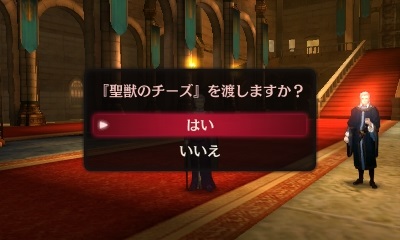
As you progress through the story, you may find quest givers in villages or other bases. There are around 30 sub-quests in total; most of them are basic fetch quests, but they provide additional incentive to explore Valentia and return to previous locales. Some of the sub-quests pit you against difficult enemies and give you rare items as rewards.
Completing certain sub-quests will also increase your Renown, as does beating enemies and recruiting certain allies. Unlike in Awakening and Fates, Renown isn’t used to obtain items and is instead a statistic that you can compare with players you meet via StreetPass or via the online global rankings. It’s a bit frivolous, but something to work towards.
Similarly, you can earn Medals by fulfilling certain requirements. These range from the super easy “win your first battle” to more arduous ones like defeating a bucketload of enemies. Just like Renown, you can compare your Medal collection with other players. Also, it feels nice getting acknowledged for your exploits, even if some of them are pretty cookie-cutter!
Onto more substantial additions, early on you will gain access to Mila’s Turnwheel, an ancient artifact that has the power to tap into the past or the future. During battles, you can activate Mila’s Turnwheel during the player phase and rewind to any point during the battle if something goes wrong or you want to try a different strategy.
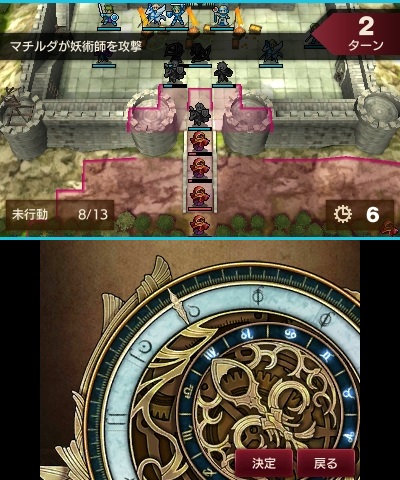
You can jump between different turns or even between different unit actions in the same turn. Heck, you can even jump in the middle of an enemy phase, although it seems a bit pointless to do so. As far as we can tell, there is no limit to how far back in time you can rewind. We tried as far as 255 turns, but it was still possible to return to the very first turn (which boggles our mind).
At the start, you can only use Mila’s Turnwheel up to 3 times per battle (or dungeon); like fatigue, you can replenish its uses by heading to the world map or making an offering to a Mila statue. From Chapter 2 and onward, you can increase its maximum uses by collecting Small Gears dotted around Valentia.
Mila’s Turnwheel is extremely flexible, for instance if you accidentally make a bad move or if you’re near the end of a battle and a poor blighter gets knocked out. At the same time, although it can be abused somewhat, it’s not an automatic win button. If the enemy is far too strong or your strategy not up to snuff, you will keep failing no matter how many times you try.
The mystical Turnwheel has additional functions too, accessible from the world map or a Mila statue. The first is to unlock the power of amiibo. By scanning in an amiibo, you will unlock the Summon amiibo skill, which lets you conjure an illusory ally during battle. If you scan a Fire Emblem amiibo, an illusory version of that hero will assist you; otherwise you’ll get a random mook.
Annoyingly, the illusory allies only assist you for one turn and they are computer-controlled, greatly limiting their uses. It would have been a lot better if they assisted for at least 5 turns or so. The new Alm and Celica amiibo also unlock a new exclusive dungeon each and you can upload your Alm and Celica data to the corresponding amiibo to enhance their illusory version.
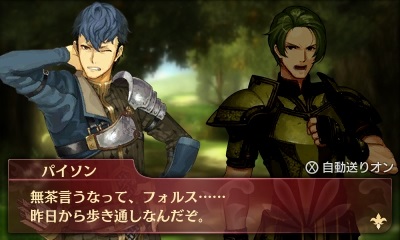
The second use is to view special memory scenes by inserting Memory Fragments found across the lands. There are ten in total and they feature scenes that occur before the main story, serving as an additional prologue for a variety of characters. As with other scenes, they are voice-acted too, making them an enjoyable way to decipher more of the backstory.
Skills make a valiant return, but they function a lot differently here. Most skills are attached to weapons and characters must continue to wield a specific weapon to learn the weapon’s skills. Unlearned skills appear as question marks in the character’s status screen, so it’s tempting to have characters go rampaging with their favourite weapons to see what skills will be unlocked.
To trigger a skill, you need to activate it from a menu. Some skills cost HP, in a similar manner to magic spells. On the plus side, many skills have unique and useful abilities, like dealing effective damage to certain families of enemies. Also, there are no percentage rate skills–if a skill is triggered, it will always work if the attack connects with the enemy.
On the down side, since skills must be triggered, they do not work during the enemy phase. Which isn’t a huge issue, as it makes the player phase more important. The bigger issue is that skills cannot trigger follow up attacks, so there may be times when it’s better to just attack normally so you can land two hits on an enemy. Useful for slower characters though.
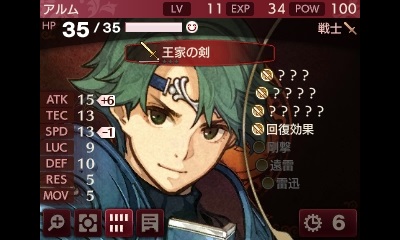
Furthermore, skills are not permanently available after being learned. To clarify, after learning all the skills from, say, the Lightning Sword, if the character removes the Lightning Sword, they lose assess to those skills unless their new weapon shares those skill(s) or they equip the Lightning Sword again. There’s a very good reason for this choice, but it does limit the skill combinations you can use.
Finally, forging also appears and it’s a lot more accessible–and useful—than in Fates. Many weapons can be forged by paying Silver Marks or, for higher level forges, rare Golden Marks. Rusted weapons and certain maxed out weapons can be upgraded to different weapons, such as a Silver Sword into a Brave Sword.
Miscellaneous
Before we finish, here are some features we couldn’t really fit elsewhere that might be of interest to some. As with recent games, both Casual and Classic Mode are available when you begin the game. In Classic, characters who reach 0 HP are gone forever, while in Casual they will simply return after completion of the map.
The game features StreetPass, SpotPass and Internet communication, but it’s all extremely limited. For StreetPass, you simply swap profile cards with other players you meet. SpotPass is only used for receiving advertisements and for sending gameplay information to Nintendo. Meanwhile, Internet is solely used for global rankings and accessing DLC.
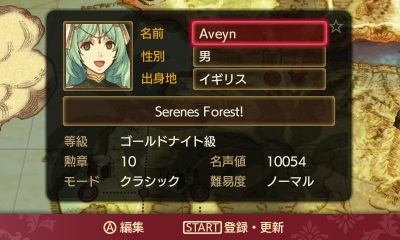
So gone are the abilities to challenge other players you meet via StreetPass or in real-time via Local or Online Multiplayer. Which to be fair, multiplayer was never one of Fire Emblem’s strong points, but it’s still disappointing to see it completely gone. Likewise, StreetPass interactions in Awakening and Fates were flawed, but entertaining in its own ways.
Last but not least, the game has DLC in spades. This includes the inevitable grinding DLC, plus a plethora of new classes and four new prologues that focus on the characters from the Deliverance. Now, we can unreservedly say that the core game itself is definitely worth full price and is a complete package even without the DLC.
However, offering not 2, 3, 4, but 10 unique classes via DLC seems a bit much. Granted, you don’t need them and honestly they mostly exist for aesthetic purposes, but it’s still a hard pill to swallow. Also, for some silly reason, there are two versions of each grinding DLC (i.e. two experience-grinding maps), which is totally unnecessary since Awakening and Fates were OK with one.
Closing Remarks
Gaiden was always a very special game in the series, even if it was considered something of a black sheep. So we’re happy to say that Echoes does a fantastic job bringing the game to the modern era with production values that are through the roof, as well as many welcome refinements and additions to the core gameplay and story-line.
With the exception of missing Pair Up, which you can quickly get used to it, if you weren’t told, you wouldn’t realise Echoes is a remake of a 25 year old game–that’s how well-made the game is. Naturally, by sticking so close to the source material, there are a couple of innate flaws, but given the overall quality of the game, it’s very easy to ignore them.